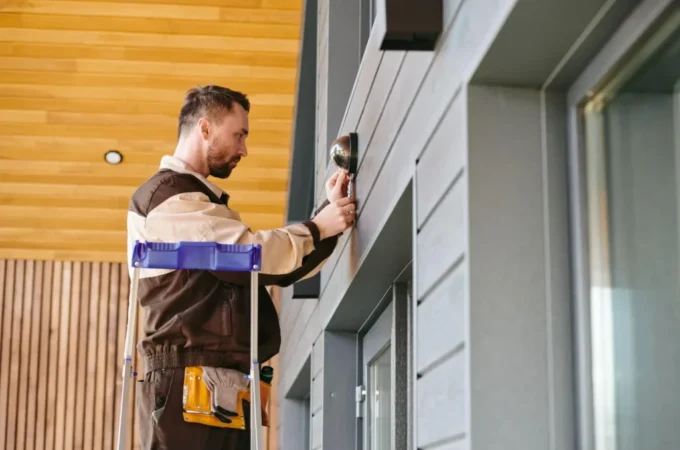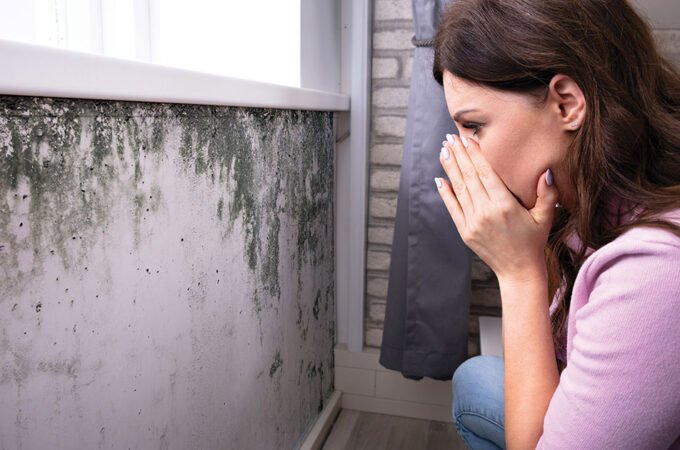
How Rope Access Painting Saves Costs for High-Rise Buildings
High-rise buildings are among the most challenging structures to maintain. With their towering height and intricate designs, ensuring the upkeep of these buildings often involves complex procedures and expensive solutions. Traditional methods of painting high-rise buildings, such as using scaffolding, aerial lifts, or cranes, have always been costly and time-consuming. However, rope access painting offers a more efficient, cost-effective, and safer alternative. This innovative method has become increasingly popular, especially for commercial properties in cities like Melbourne, where maintaining a pristine appearance is key to preserving property value.
Table of Contents
ToggleWhat is Rope Access Painting?
Rope access painting is a technique used to access hard-to-reach areas of a building without relying on traditional scaffolding or lifts. Instead, painters use ropes and harnesses attached to secure anchor points on the building to descend or ascend freely. This method was initially developed for the oil and gas industry, but its application has expanded to various sectors, including building maintenance. Today, painters in Melbourne and around the world employ this technique for a wide range of services, including painting, cleaning, and maintenance of high-rise structures.
The main advantage of rope access painting is the reduction in the use of heavy equipment, which can be costly both to rent and operate. Additionally, rope access reduces setup time, as there’s no need to construct scaffolding, making the job more efficient and less disruptive to building occupants.
The Cost-Effective Nature of Rope Access Painting
1. Elimination of Expensive Equipment
One of the major costs associated with traditional high-rise building painting methods is the rental and use of equipment such as scaffolding, cranes, and aerial lifts. These tools require significant setup time, a large team of workers for installation, and high operating costs. With rope access painting, all of these expenses are virtually eliminated. Ropes, harnesses, and anchor points are much less expensive than scaffolding or heavy machinery, leading to significant cost savings.
Additionally, by eliminating the need for extensive equipment, rope access painting reduces the manpower required for the job. Less labour is needed for setup, maintenance, and teardown, which further cuts costs. This is especially advantageous for Body Corporate & Strata Painting projects, where cost-efficiency and minimal disruption are key priorities.
2. Faster Completion Times
The time-saving aspect of rope access painting is another factor that contributes to cost savings. Traditional scaffolding and lift setups can take days to install and dismantle, which increases labour costs. However, rope access painting typically takes less time to set up, and workers can move more quickly between areas, as they don’t need to rely on cumbersome equipment or reposition scaffolding. As a result, the job is completed faster, reducing both the labour costs and the total duration of the project.
Moreover, fewer workers are needed to manage the project, which also reduces the overall cost. The ability to work efficiently and quickly means that businesses can save significantly on operational downtime, allowing tenants to continue their activities without disruptions. This is particularly important in Remedial Building Services, where quick, effective repairs and finishes are essential.
3. Minimal Disruption to Occupants
Traditional scaffolding systems can block access to building entrances, windows, and walkways, causing significant inconvenience to tenants and businesses in high-rise buildings. This disruption can result in lost revenue for building owners, as tenants may need to vacate their offices, or residents might face interruptions.
With rope access painting, there is no need for large-scale scaffolding that blocks access to entrances or windows. Painters work from the ropes, which means there is no disruption to the normal functioning of the building. This is particularly advantageous for buildings with high traffic or areas that need to remain operational, such as office buildings or hotels. The process is discreet, ensuring minimal interference with the daily operations of the building — a major benefit for Body Corporate & Strata Painting work where maintaining resident or tenant access is critical.
4. Access to Difficult Areas
Another cost-saving feature of rope access painting is its ability to reach difficult areas that are often challenging for traditional methods. Buildings often have intricate architectural features, such as ledges, parapets, or other difficult-to-reach spots, which make scaffolding hard to position effectively. These features are usually left unpainted or poorly maintained due to the difficulty in accessing them.
However, rope access eliminates this problem. Painters can easily access narrow ledges, tall facades, and other hard-to-reach areas, ensuring every inch of the building is painted and maintained. This ability to cover all areas of the building means that you get more value for the money spent on the painting service, as no space is left untouched. For Remedial Building Services, this precision access allows teams to address even the most inaccessible structural or aesthetic issues.
5. Increased Safety
Rope access painting is often considered safer than traditional high-rise painting methods. While it may seem counterintuitive to some, using ropes and harnesses instead of large machines or scaffolding can reduce the risk of accidents. Rope access workers undergo extensive training to ensure they follow strict safety protocols, and the equipment used is designed to prevent falls and injuries.
Safety is crucial in any construction or maintenance project, and the low risk of accidents with rope access is a major reason why it is increasingly chosen over scaffolding or cranes. Since the equipment is lightweight and the process requires fewer workers, the chances of accidents caused by faulty equipment or human error are reduced. This makes it a reliable option not only for general projects but also for specialised services like Body Corporate & Strata Painting, where safety and compliance are non-negotiable.
How Rope Access Painting Works
1. Preparation and Site Assessment
Before the painting work begins, the rope access team will assess the building to ensure that it is suitable for rope access and to identify anchor points that will secure the ropes. The team will inspect the building for any hazards, such as loose materials or unstable surfaces. A plan will be developed to ensure safe working conditions for all involved. This planning stage helps avoid any unforeseen issues that might disrupt the work or cause additional costs.
2. Installation of Anchor Points
Anchor points are secured on the building, and the team will set up ropes that are used to climb and descend the structure. These anchors are chosen based on their ability to bear weight and provide a stable foundation for the workers. The painter will be securely fastened to the rope system, which allows for controlled and safe movement around the building.
3. Painting Application
Once the rope system is in place, the painters begin applying the paint. They work with great care and precision, applying multiple coats to ensure an even and smooth finish. The ability to move freely between different areas of the building makes this process much more efficient than traditional methods, where repositioning scaffolding can take time and cause delays.
4. Inspection and Clean-Up
After the painting is completed, a thorough inspection is carried out to ensure the job meets the required quality standards. Any touch-ups or adjustments are made at this stage to ensure a perfect finish. Once the work is complete, the ropes and equipment are carefully removed, and the building is left clean and free of any debris.
Why Opt for Rope Access Painting?
If you’re considering rope access painting for your high-rise building, here are a few compelling reasons to choose this method:
- Cost-Effectiveness: The elimination of expensive scaffolding and cranes results in a lower overall cost.
- Time-Saving: Faster setup and more efficient work processes reduce project timelines.
- Safety: The method is safer, with professional rope access technicians trained to follow strict safety guidelines.
- Minimal Disruption: With no scaffolding in place, the building’s daily operations are unaffected, ensuring minimal disruption.
- Access to Challenging Areas: Rope access allows painters to reach difficult areas that traditional methods often struggle to access.
Frequently Asked Questions (FAQS)
1. What is rope access painting?
Rope access painting is a method where painters use ropes and harnesses to access high-rise buildings or other structures to perform painting and maintenance tasks. It offers a more cost-effective and efficient alternative to traditional scaffolding or crane-based methods.
2. How does rope access painting save costs?
By eliminating the need for scaffolding, cranes, and lifts, rope access painting reduces both material and labor costs. The process is faster and more efficient, which also lowers the overall price for the service.
3. Is rope access painting safe?
Yes, rope access painting is considered a safe method, as the painters are highly trained and use specialized equipment, such as harnesses and ropes, to ensure their safety while working at height.
4. Can rope access painting be used on all types of buildings?
Rope access painting is suitable for most high-rise and hard-to-reach buildings. It is especially effective for buildings with difficult architectural features or those where traditional access methods would be impractical.
5. How long does rope access painting take to complete?
The time required for rope access painting depends on the size and complexity of the building. However, this method is generally faster than traditional painting methods because there is less time spent on setup and repositioning equipment.
Conclusion
Rope access painting is an innovative and cost-effective solution for maintaining high-rise buildings. It offers numerous benefits, including reduced costs, faster completion times, and the ability to access hard-to-reach areas that traditional methods often cannot. With a focus on safety, minimal disruption, and high-quality results, rope access painting is the ideal choice for building owners looking to maintain their structures in the most efficient way possible.
Anna Fox is the Content Marketing Strategist of Señor Mist, a Phoenix, Arizona-based company that provides high pressure misting systems/fog effects, comfort heaters, patio drop shades, hvls fans and more. When not writing, she makes use of her spare time reading books and hiking with her dog, Blaze.






